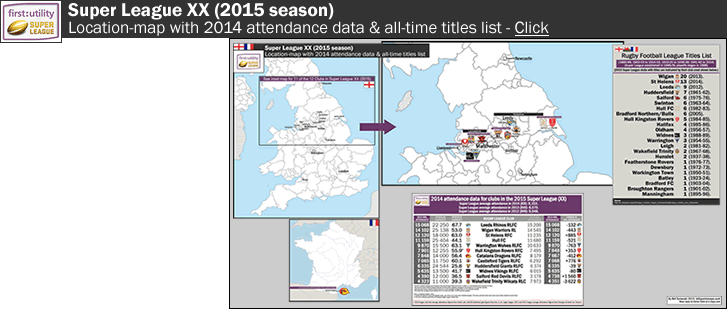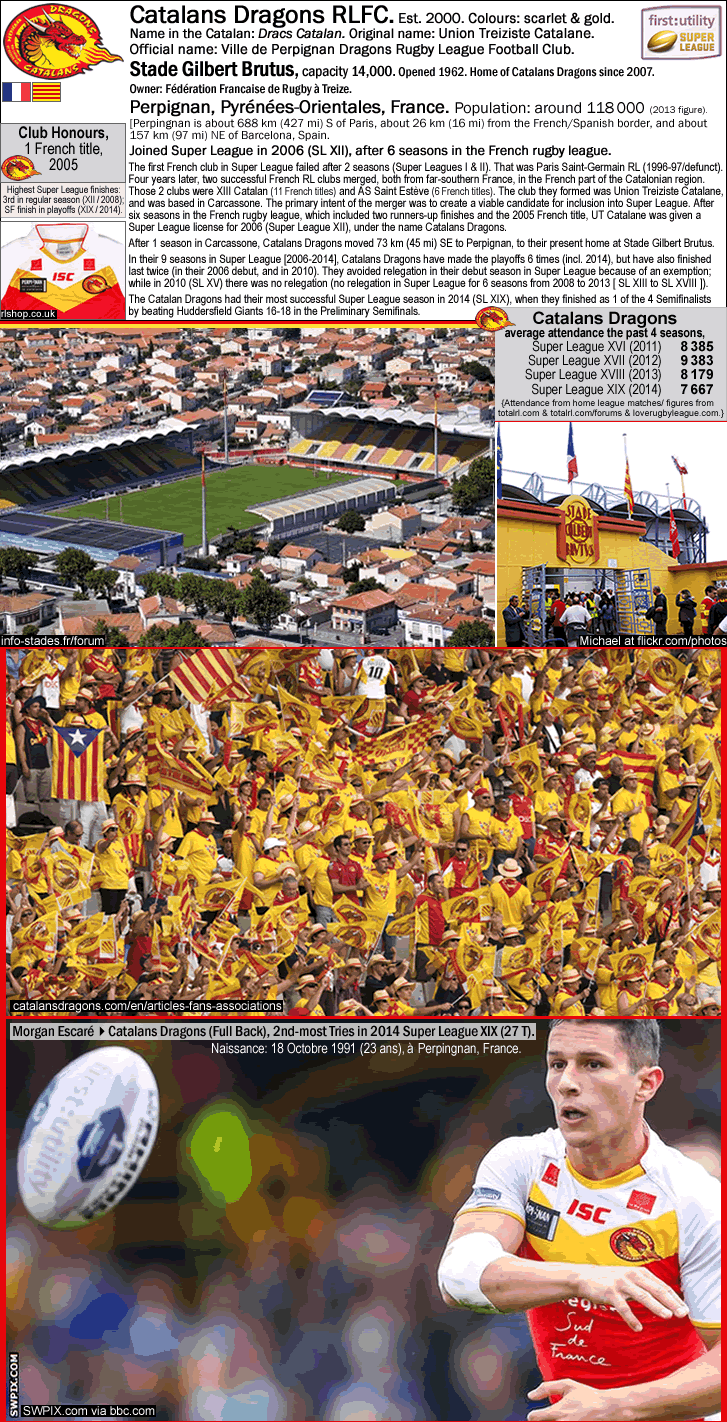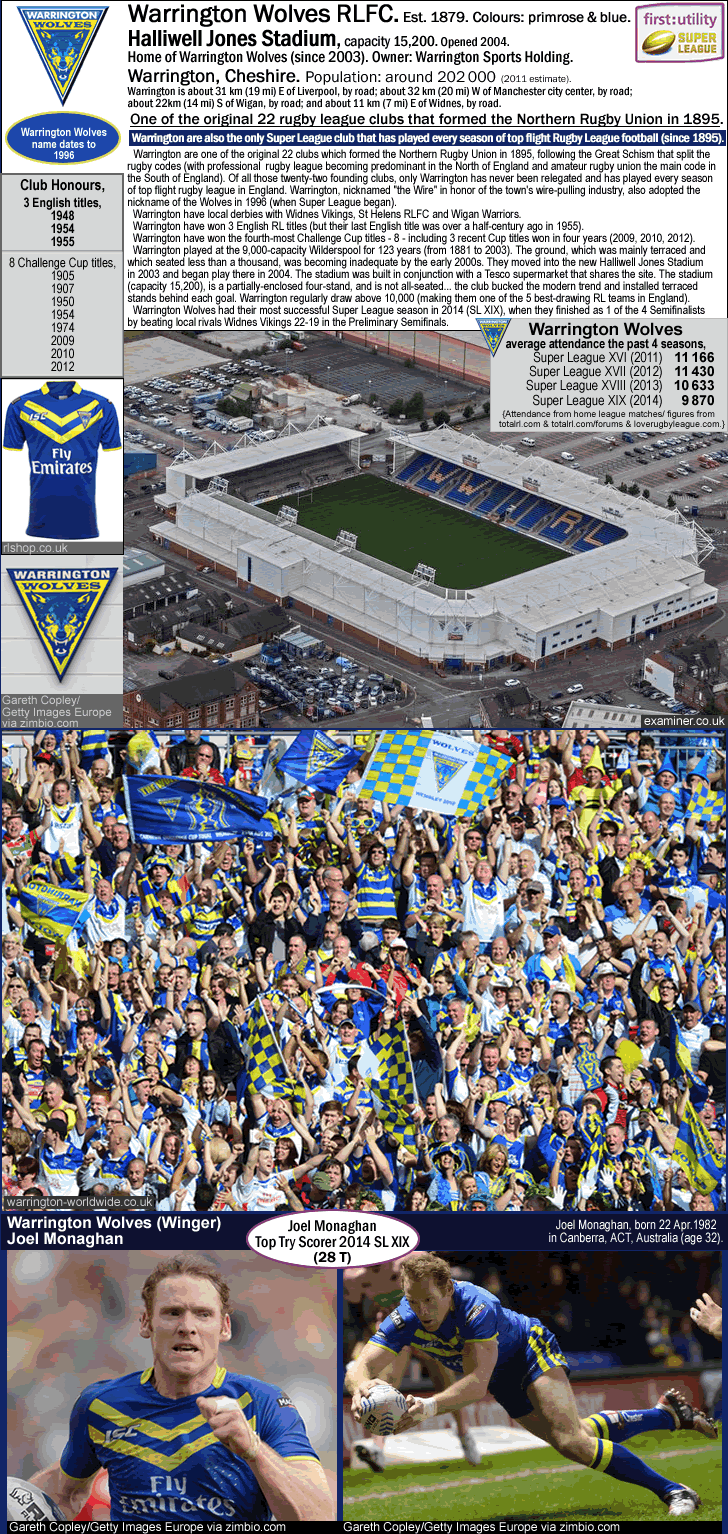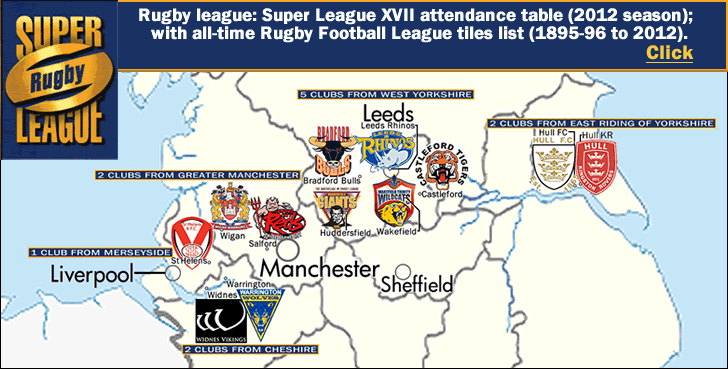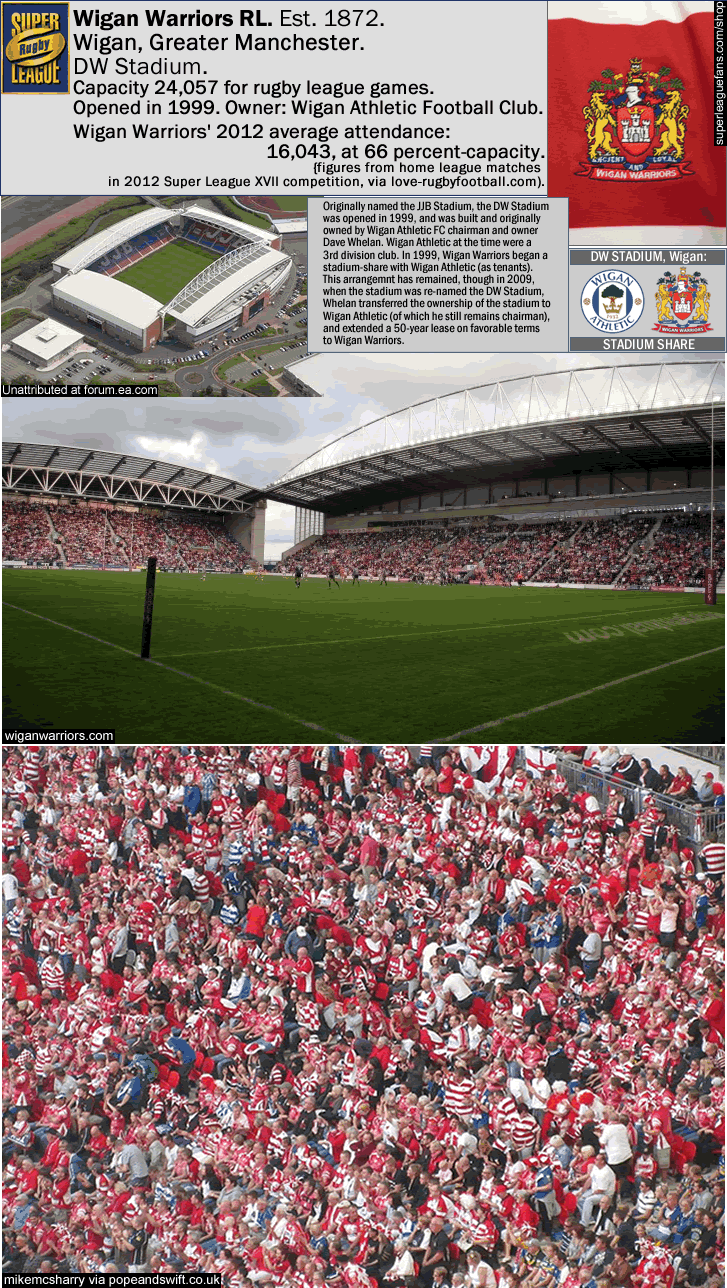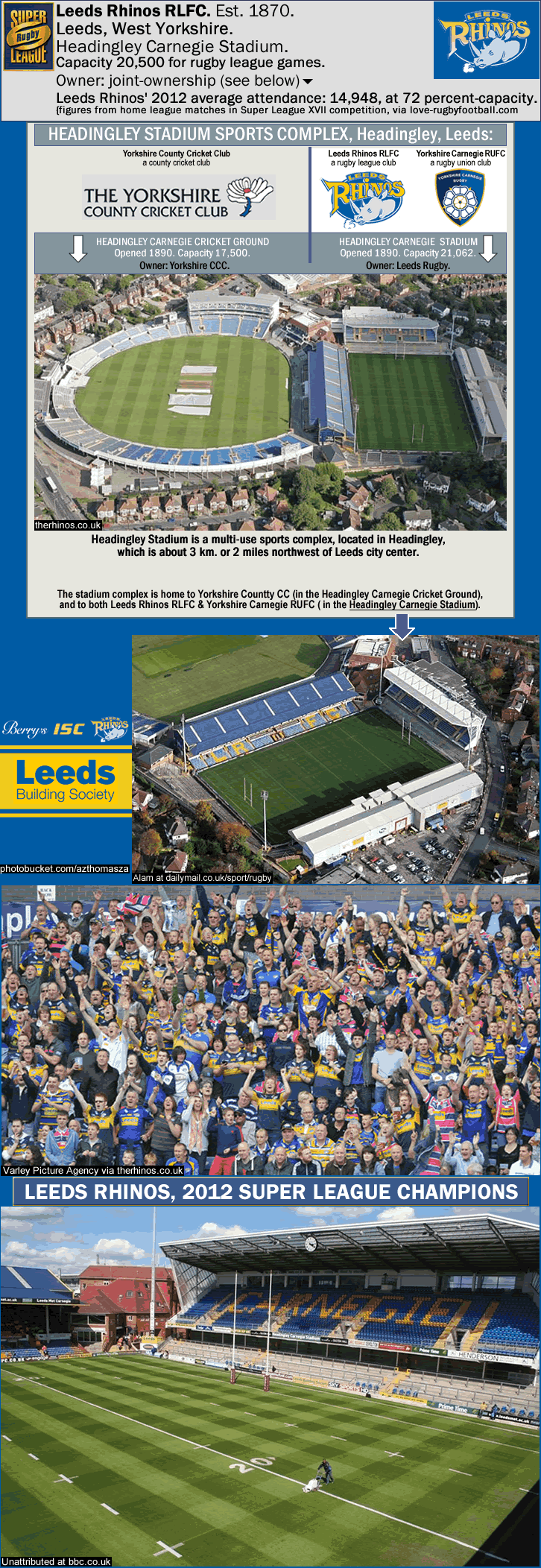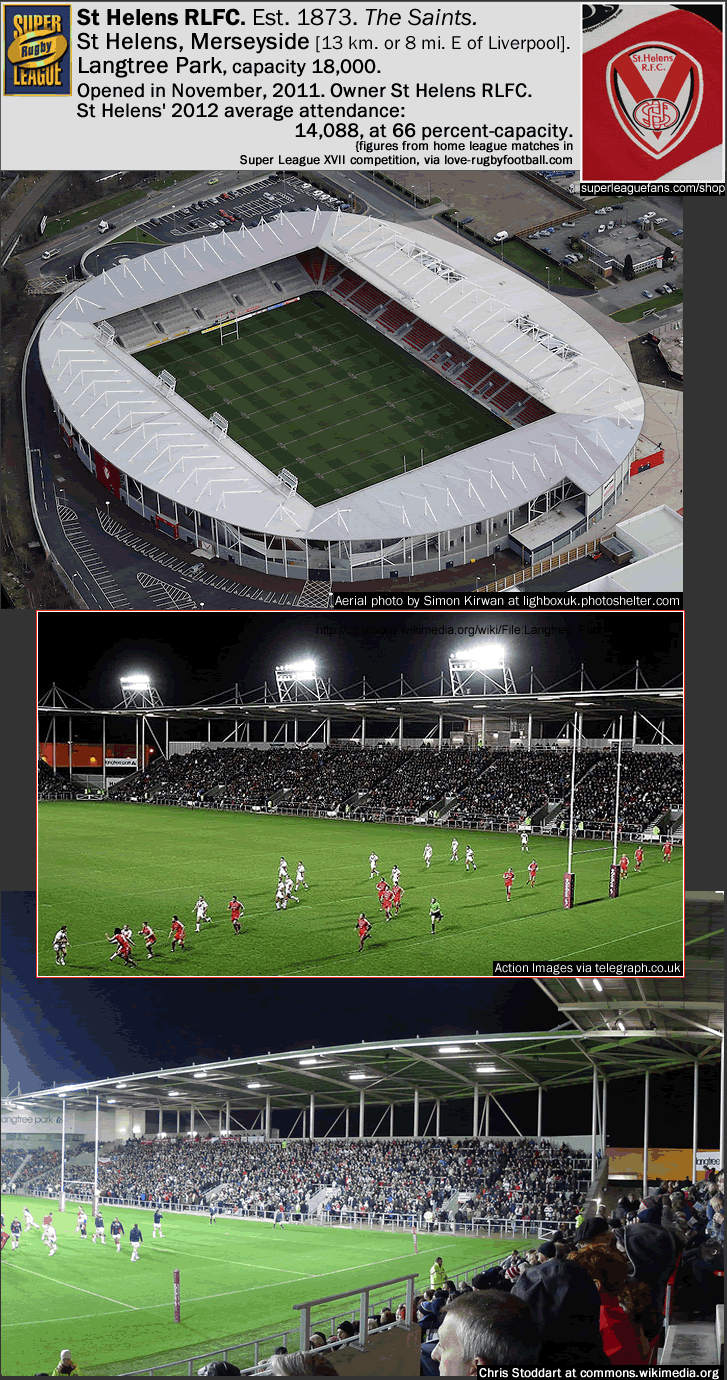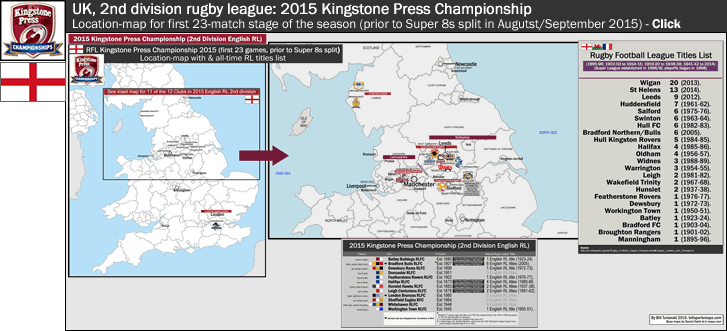
English RL 2nd div map 2015
…
…
Links…
-New competition structure explained, rugbyleaguechampionships.co.uk/['2015 - A New Era'] [from the Official site].
-Teams, etc…2015 RFL Championship (en.wikipedia.org).
-Fixtures, results, table(s), etc…rugbyleaguechampionships.co.uk/match_day/fixtures [Official site].
-BBC.com’s rugby league page/results (which includes 2nd div RL attendance figures for most matches), bbc.com/sport/rugby-league/championship/results.
-A good RL site is Total RL.com, and here is their page on 2nd division English RL…totalrl.com/category/kingstone-press-championship.
-Another good RL site is Love Rugby League, and here is their page on 2nd division English RL…loverugbyleague.com/championship.
-My most-recent map & post on 1st division English RL (from Feb. 2015),
Rugby League: 2015 Super League XX location-map, with all-time English RL titles list & attendance figures from 2014./ Plus a season-preview article on 2015 Super League XX, written by James Nalton./ Plus illustrations of the 4 semifinalists from last season, including 2014 champions St Helens RLFC (billsportsmaps.com).
-
England, second division rugby league, 2015 RFL Championship (aka Kingstone Press Championship): location-map with all-time English RL titles list; plus a preview of the new Super 8s promotion/relegation play-off mini-league
By Bill Turianski on 8 June 2015; twitter.com/billsportsmaps.com.
The 12-team second division in rugby league in the United Kingdom, called the Kingstone Press Championship for sponsorship reasons, is pro/semi-pro; attendances range in the ~500-to-2.5-K-per-game range, with an average crowd size of around 1.2 K or so. (Last years’ average crowd figure is unavailable, however 2 years ago in 2013 the average crowd size was 1,199 {see this}.)
The 1st division in English RL draws similar crowd-sizes to the 3rd division in English football;
while the 2nd division in English RL draws similar crowd-sizes to the 5th division in English football…
A convenient way of getting a picture of what crowd-sizes tend to be in the top two tiers of English rugby league is to compare it to English football attendances within the English football pyramid. So, from current and recent figures (from 2013, 2014, 2014-15)…the 1st division in English rugby league (Super League) is akin to Football League One [the 3rd division] in terms of crowd-size (~7-to-9-K per game range of league averages); while the 2nd division in English rugby league is akin to the Non-League football Conference National [the 5th division] in terms of crowd-size (~1.1-K-to-1.9 K per game range of league averages). (Figures {& sources}: 2014 Super League avg total attendance: 8,153 {source} versus 2014-15 Football League One avg total attendance: 7,043 {source} ; 2013 RFL Championship avg total attendance: 1,199 {source} versus 2014-15 5th div Non-League football avg total attendance: 1,855 per game {source}.)
There are some recent exceptions, such as the 7.4 K that Leigh Centurions drew on the 2015 season opener (versus newly-relegated Bradford Bulls). [Bradford Bulls probably had well over 1 K traveling fans cross the Pennines to attend; the distance between Leigh in western Greater Manchester and Bradford in West Yorkshire is 73 km (or 45 mi) by road.] It just so happens that there is an excellent write-up (with gallery of photos) from that match (which Leigh won 36-24), at the awesome site known as The Onion Bag – Travels around Non League Football & Rugby League Grounds…
Leigh Centurions – Sunday 15th February 2015. Kingstone Press Championship. Leigh Centurions 36 Bradford Bulls 24. Atten 7499 (onion-bag.blogspot.co.uk).
Attendances will almost certainly increase in the English RL 2nd division this year, because of the re-introduction of promotion/relegation into the format…
[Note: very first link at the top of this post has the official site's page on the new format, again, here.}
Basically, the new format, which has re-introduced promotion/relegation, will see some 2nd division matches with attendance increases, especially come August and September 2015, after the 23rd game, once the season morphs into the Super 8s, when the top four 2nd division clubs get re-grouped with the bottom 4 Super League clubs. Those 8 teams then fight it out in what is essentially a 7-match round-robin mini-league...with the 4 best from that set-up earning the right to play in the 1st division in 2016 (Super League XXI), and with the 4 worst from that set-up being placed in the 2nd division for 2016.
{For a more detailed description, see this excerpt from Wikipedia, ..."Following the split into the Super 8's, the top four teams in the Championship 2015 will join the bottom four teams of the Super League 2015 in "The Qualifiers". This group will see each team play each other once each, totaling seven extra games, with points reset to zero for the qualifiers. After 7 extra rounds the top 3 teams will earn a place in the Super League competition for 2016, thus either retaining or earning a place in the top competition. The teams finishing 4th and 5th in the qualifiers will play off in an extra fixture, at the home of 4th, for the final place in the 2016 Super League competition. The loser of this fixture, along with teams finishing 6th, 7th, and 8th in the qualifiers will either remain or be relegated and will play in the Championship in the 2016 season."...{end of excerpt from 2015 RFL Championship at en.wikipedia.org}.
In other words, with the new RL set-up in England, as many as 4 but as few as zero 2nd division clubs can gain promotion to the top flight.
Below: Leigh Centurions, who sit first in the second tier as of 6 June 2015...
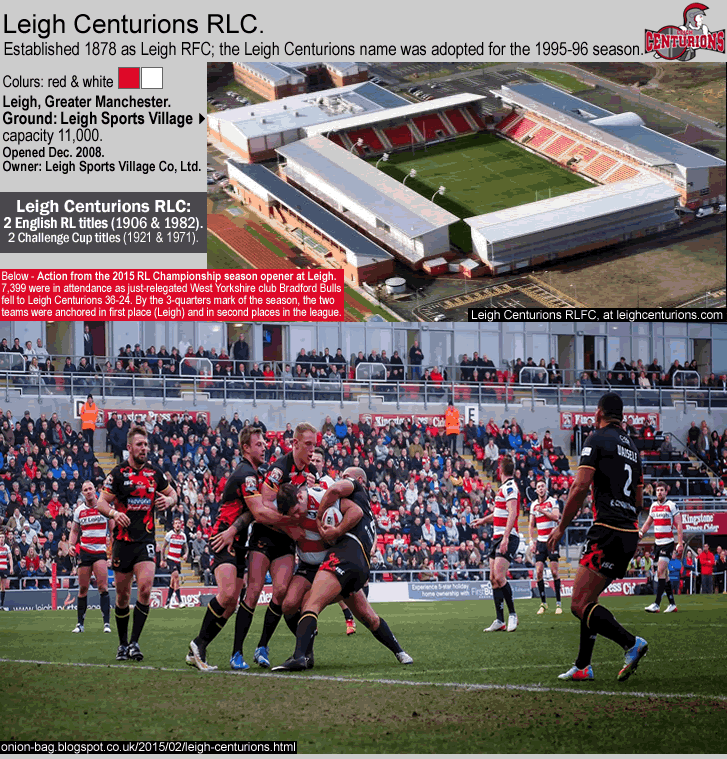
Photo credits above -
Aerial photo of Leigh Sports Village by Leigh Centurions RLFC, at leighcenturions.com/club/contact.
Action photo from 15 Feb. 2015 (Leigh 36, Bradford 24), photo by Onion-Bag.blogspot.com at onion-bag.blogspot.co.uk/2015/02/leigh-centurions.html; and at onion-bag.blogspot.co.uk/2015/02/leigh-centurions.html.
So, come mid-August, who will be in the 2015 Super 8s promotion/relegation mini-league?
...Note: below is a brief look at the tables from 8 June 2015 (or after about three-quarters of the regular seasons have been played [~15 to 17 games-played per team])…
2nd div teams…
-{Here is the RL 2nd div/Championship table (bbc.com)}.
Two-time national RL champions Leigh Centurions and 6-time-champions the Bradford Bulls sit even on 28 points (14-1/ with Leigh having a better points-difference of 365 [v 360 p-d for Bradford]). Leigh were undefeated prior to their surprise loss on 7 June away to London Broncos. Some observers feel Leigh look like the best of the second tier by a considerable margin, but meanwhile, Bradford’s’ objective of bouncing straight back to Super League remains on-course. Leigh and Bradford are now virtual locks to make it to the Super 8s round. As to the other two teams who will qualify for the promotion/relegation/ mini-league, it is starting to look like the 3rd spot will go to the Sheffield Eagles, with the fourth spot being a toss-up between the Dewsbury Rams, Halifax RLFC, and Featherstone Rovers, with London Broncos now looking to also have a chance of squeaking in. The London Broncos (aka the formerly-worst-drawing 1st div English RL club) are now poised to move up the table, because they play hapless and winless Doncaster RLFC next Sunday the 14th of June.
1st div teams…
-{Here is the RL 1st div/Super League table}
(Leeds Rhinos lead the table at 12-1-4 with St Helens and Wigan 1 and 2 points behind respectively.}
As far as which 4 basement dwellers from the 2015 top tier will join the top 4 of the second tier, well, if you look at the current Super League table, you will see that the now-lowest-drawing 1st div English RL club, the Wakefield Wildcats (who drew ~4.3 K per game in 2014) look to have all but guaranteed that they will be fighting for their top-tier existence in the Super 8s come August and September. Wakefield have just 2 wins after 16 games, and are 14 points from safety. The other 3 that will be joining Wakefield in the promotion/relegation Super 8s is still very uncertain, but if the season were to end today, it would be: Salford, Hull KR, and Widnes. However, 5 more clubs are not by any means safe yet (Catalans, Hull FC, Castleford, Warrington, Huddersfield).
…
The 2nd Division in English RL is currently comprised of the following…
Currently [2015 regular season/Feb-to-July], of the 12 teams in the RL 2nd division in the UK, 11 are from the north of the England, with the exception being the London Broncos (whom were relegated in 2014, along with Bradford Bulls). So, just like in the first division in RL in the UK (Super League), the second tier is currently is comprised almost completely of rugby league clubs from the historical ceremonial counties of Yorkshire and Lancashire, but also in the second tier currently there are two clubs from Cumbria in the far northwest of England (Workington Town and Whitehaven), and as recently as 2014 there was representation from the north of Wales (the North Wales Crusaders, who were relegated to the 3rd division last year [2014]).
…
In 1895, a split in Rugby football created the two codes…
History of rugby league/The schism in England (en.wikipedia.org).
In 1895, a split in Rugby football created the two codes (pro Rugby League to the North / amateur Rugby Union to the South). This resulted in the formation of the Northern Rugby Football Union, which was of course the precursor to Super League rugby (est. 1996), in particular, and was also the precursor of all Rugby League leagues in general.
The list below shows which of the 22 founding Rugby League clubs who formed the NRFU (for the 1895-96 season) are currently in the 2nd Division as of 2015 (5 clubs)…
Batley RLFC (est.1880).
Bradford FC * (est. 1863/ re-est. 1907 as Bradford Northern RLFC/see note below).
Halifax RLFC (est. 1873).
Hunslet RLFC (est. 1883).
Leigh RFC (est. 1878).
*Note:
*Bradford FC played rugby (and later on by 1879 also played cricket) in the 1863 to 1906 time period. In 1907 the club was split in 2 branches:
1). An association football club, Bradford Park Avenue AFC.
2). A rugby league club, Bradford Northern, which joined the 1907-08 Northern Rugby Football Union (their name was later changed to Bradford Bulls RLFC, in 1996.)
…
Title-winning clubs currently in the RL second division...
[Source for the list below, Rugby Football League Championship/League Leaders and Champions; Super League/Super League Champions (en.wikipedia.org).]
7 of the 12 clubs currently in the RL second division have won national English RL titles:
Bradford Northern/Bulls (with 6 titles, last in 2005),
Halifax RLFC (with 4 titles, last in 1985-86),
Leigh Centurions (with 2 titles, last in 1981-82),
Hunslet Hawks (with 2 titles, last in 1937-38),
Featherstone Rovers (with 1 title in 1976-77),
Workington Town RLFC (with 1 title in 1950-51),
Batley Bulldogs (with 1 title in 1923-24).
___
Thanks to the contributors at 2015 RFL Championship (en.wikipedia.org).
Thanks to D-maps.com, for blank map of the UK, http://d-maps.com/pays.php?num_pay=218&lang=en.
